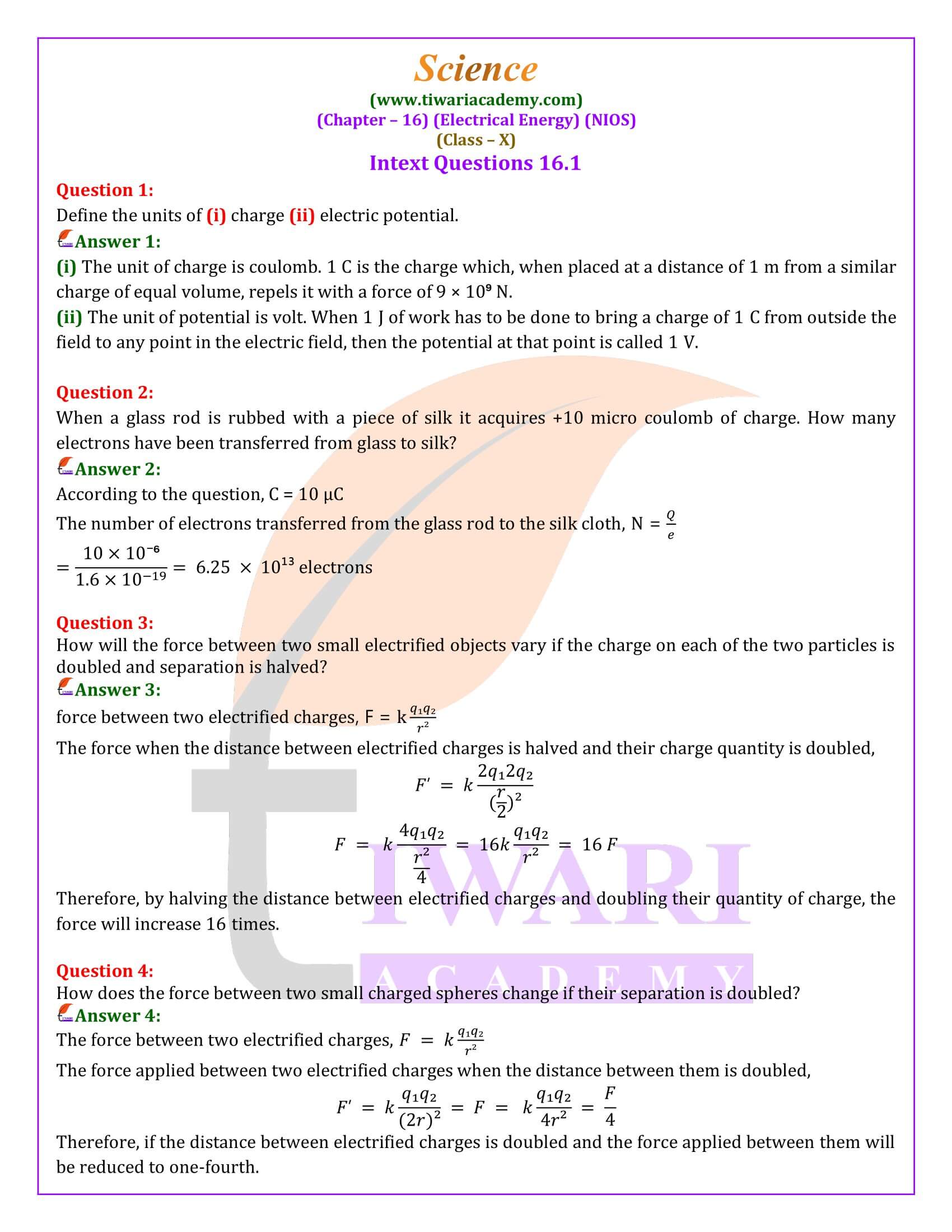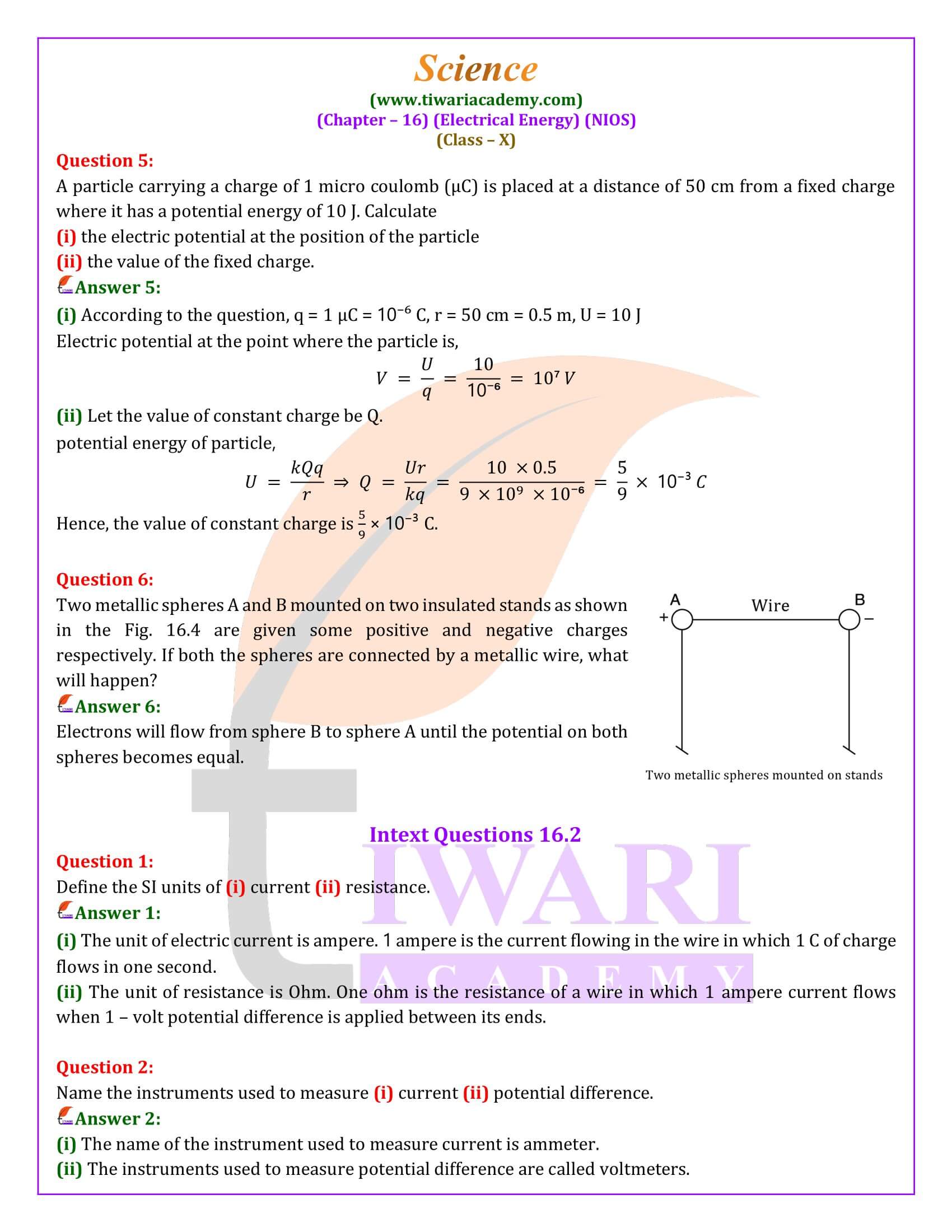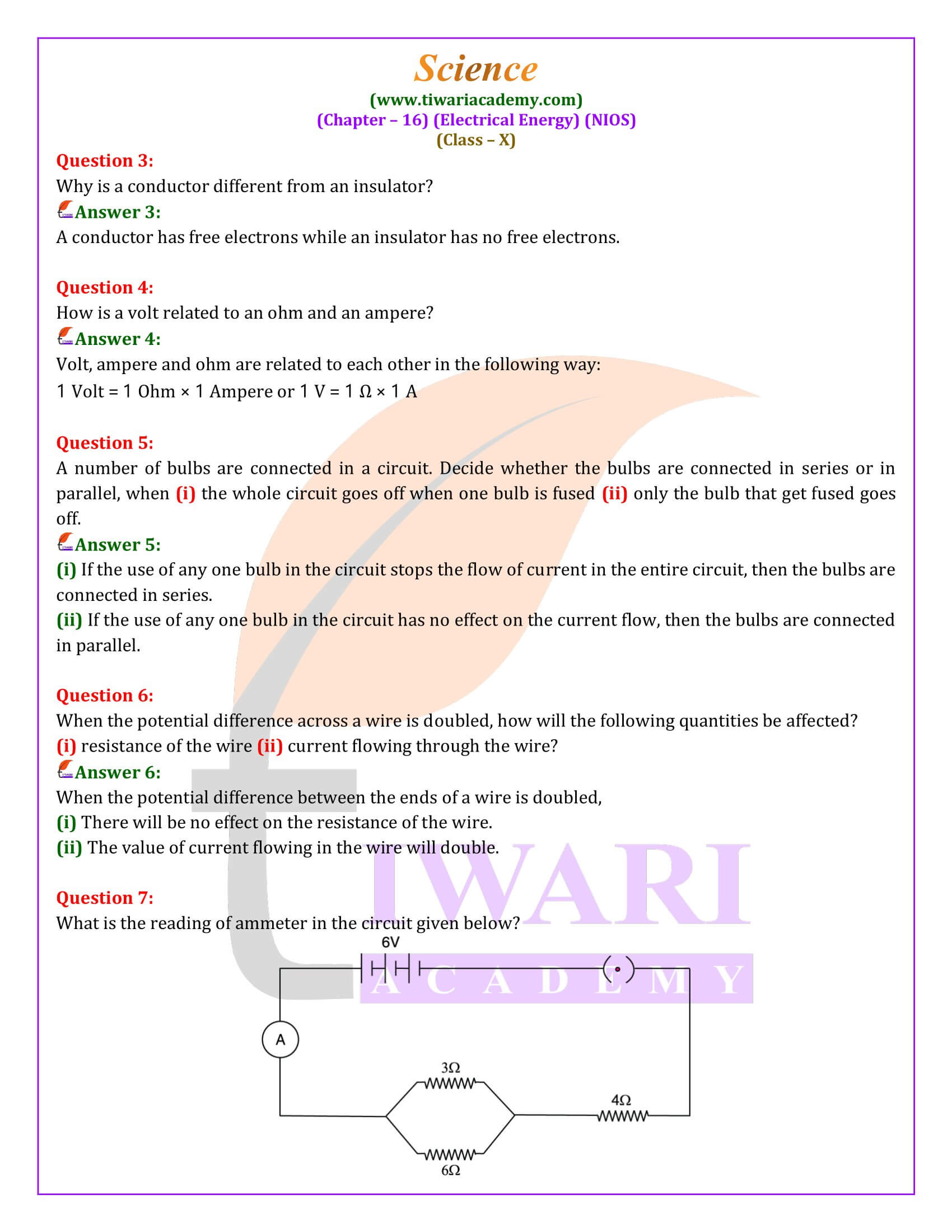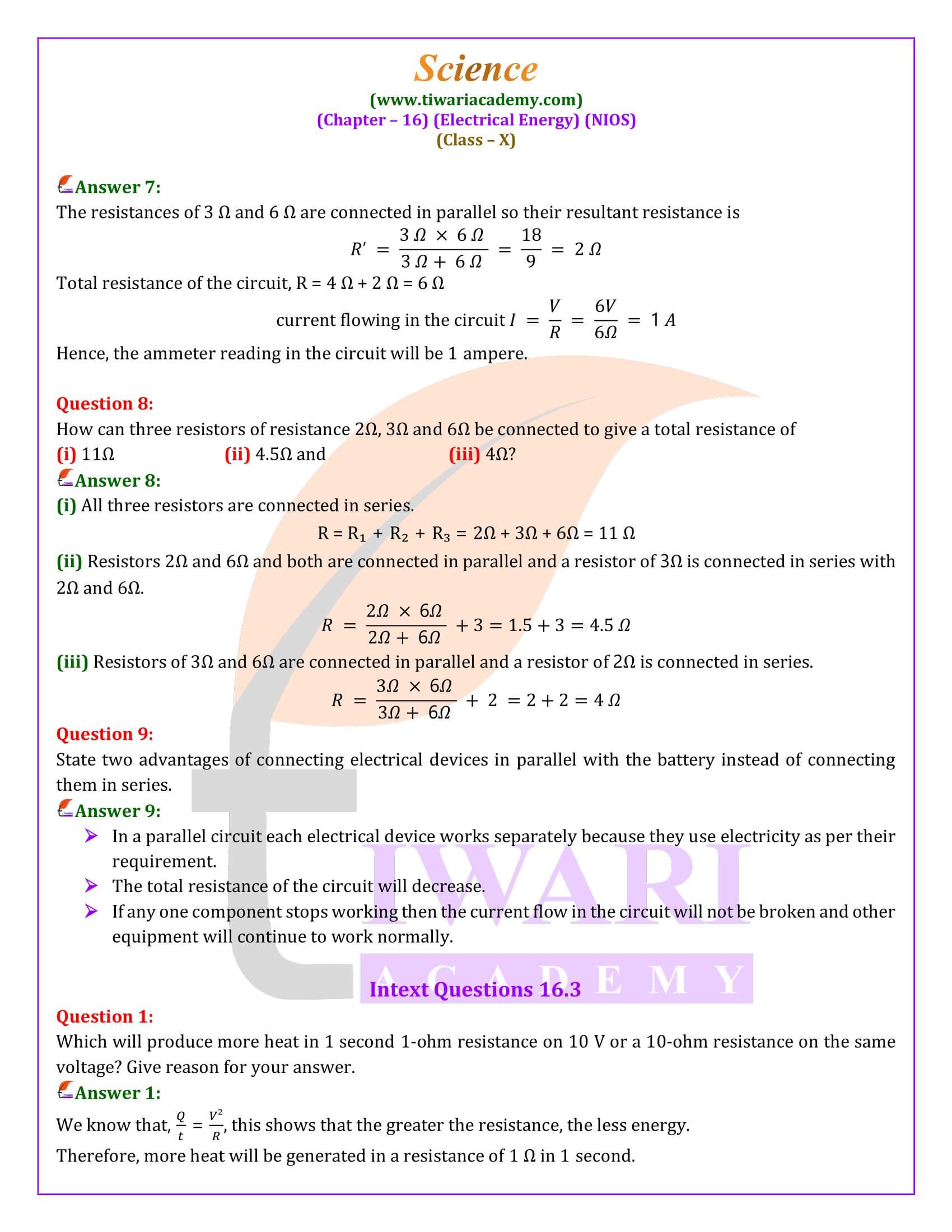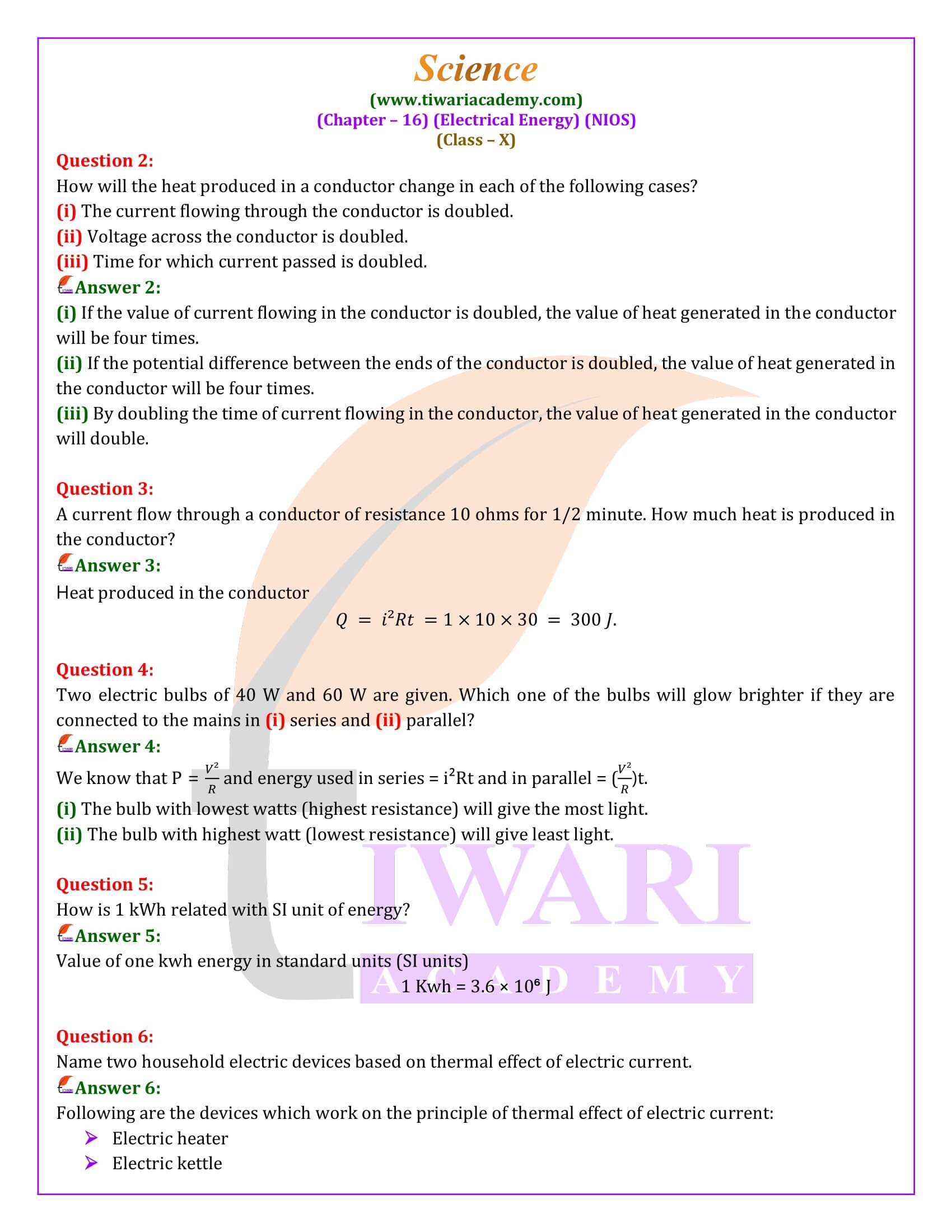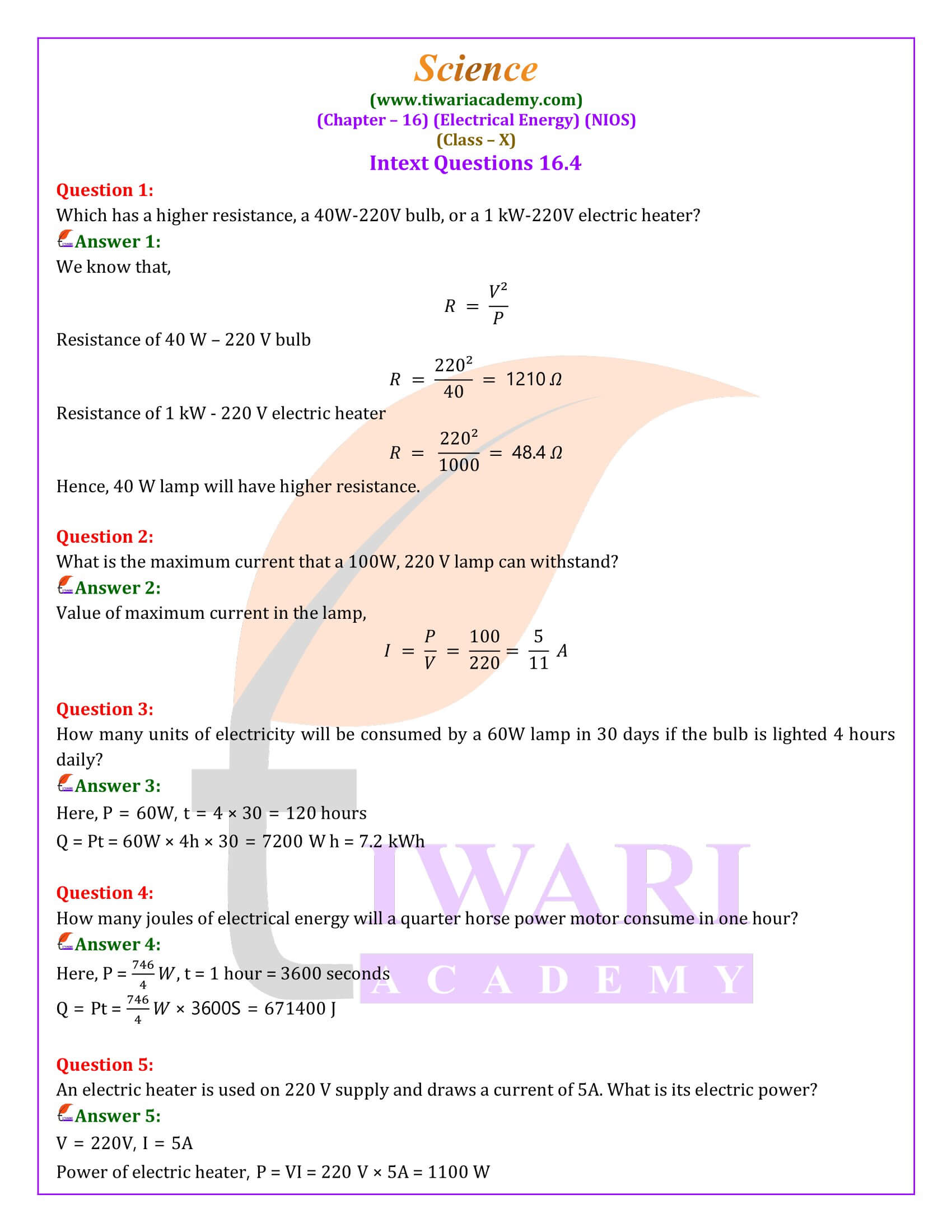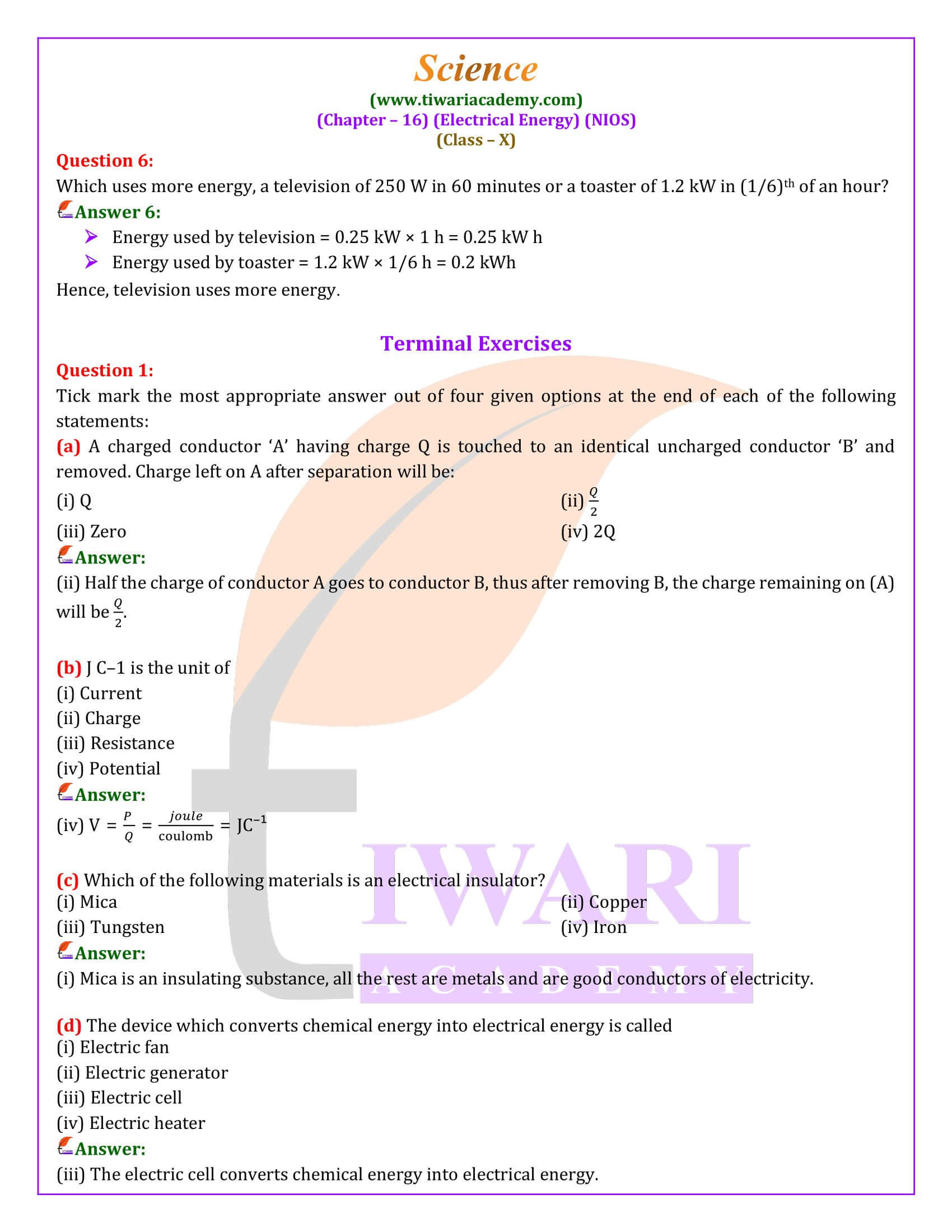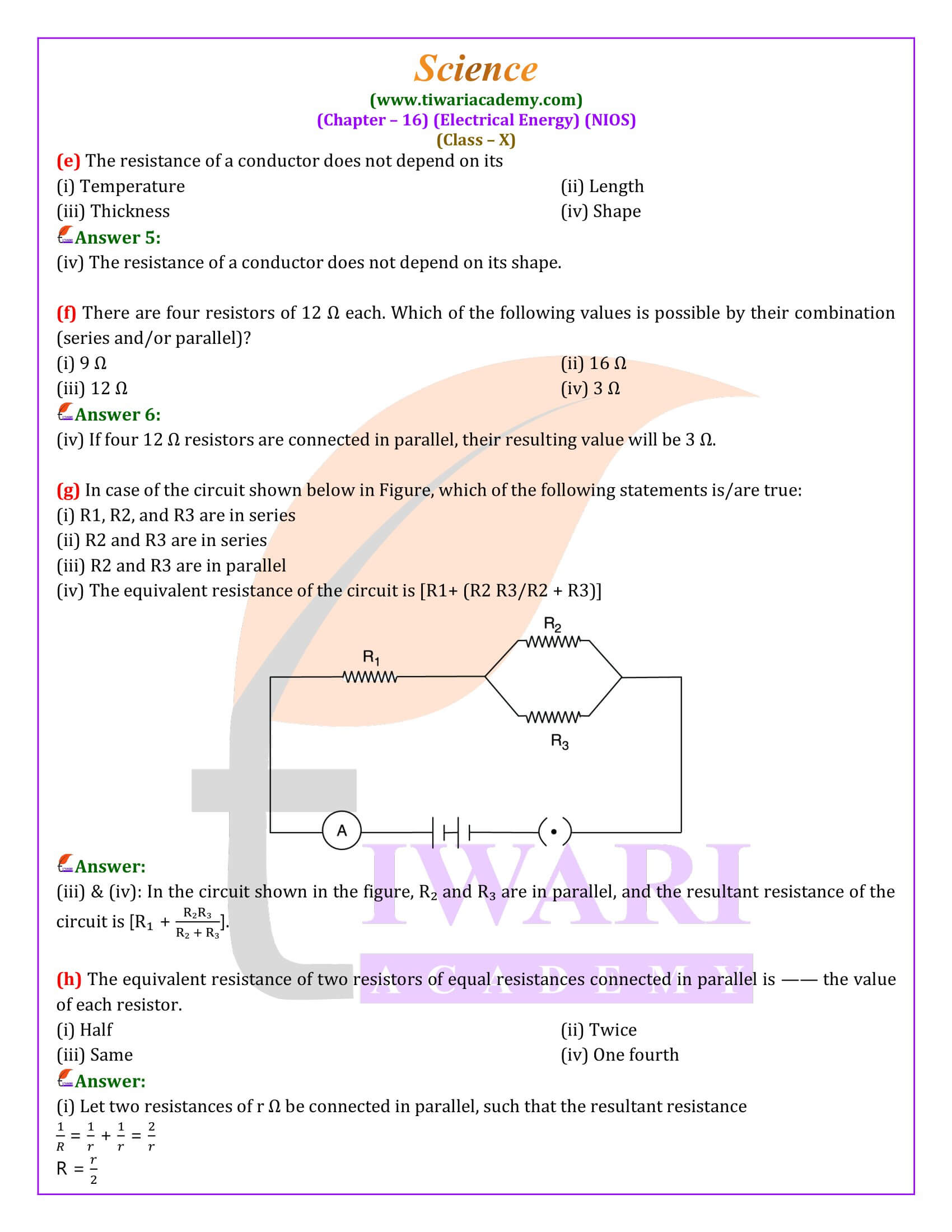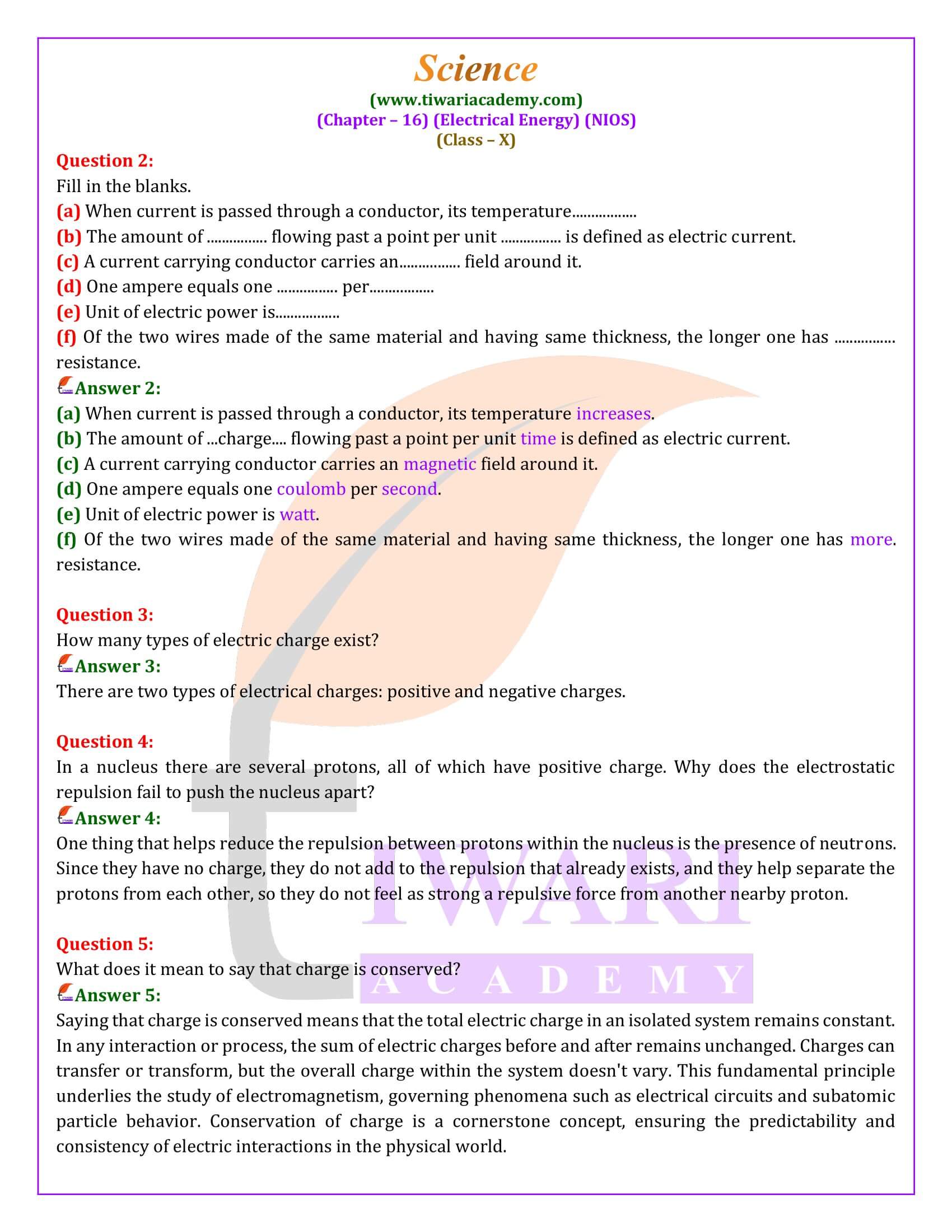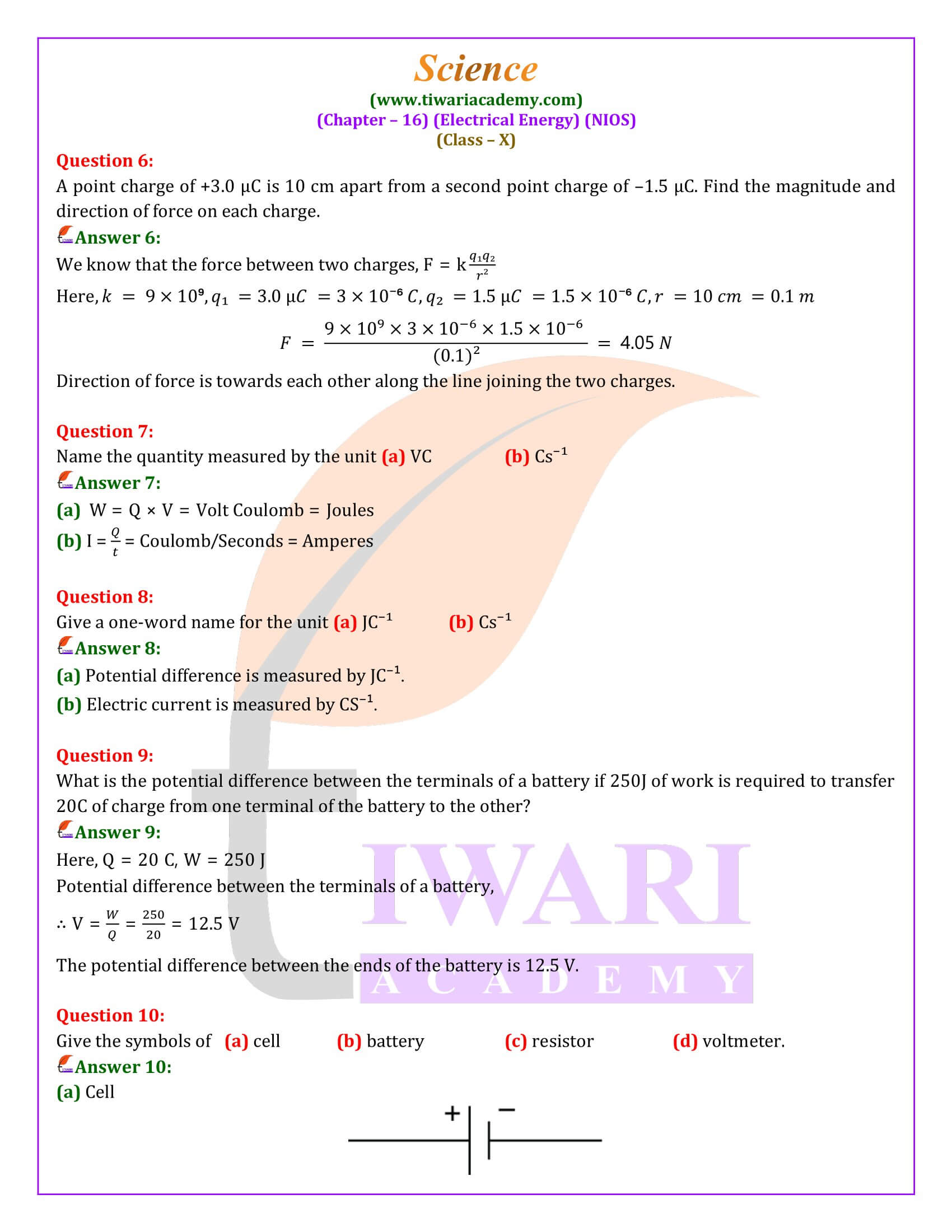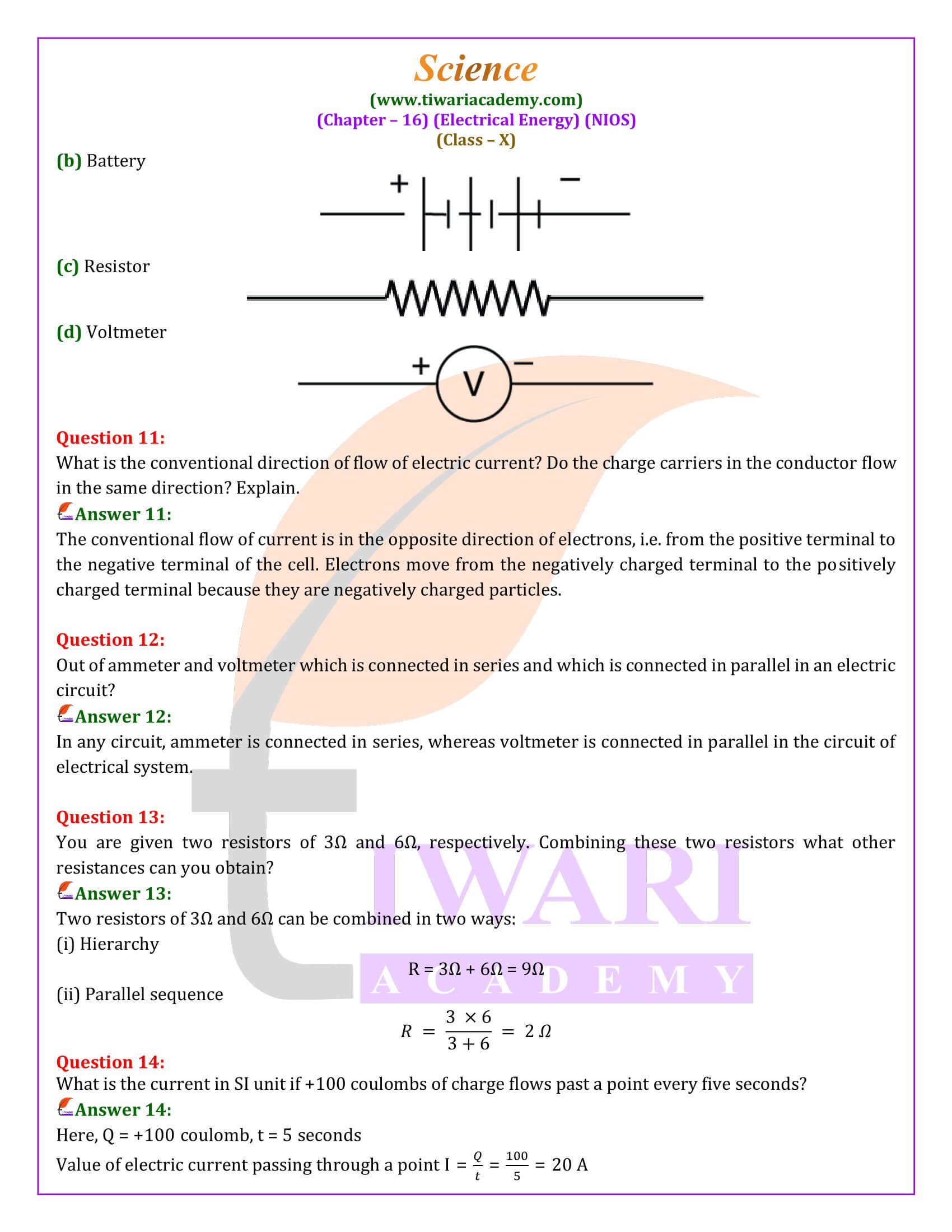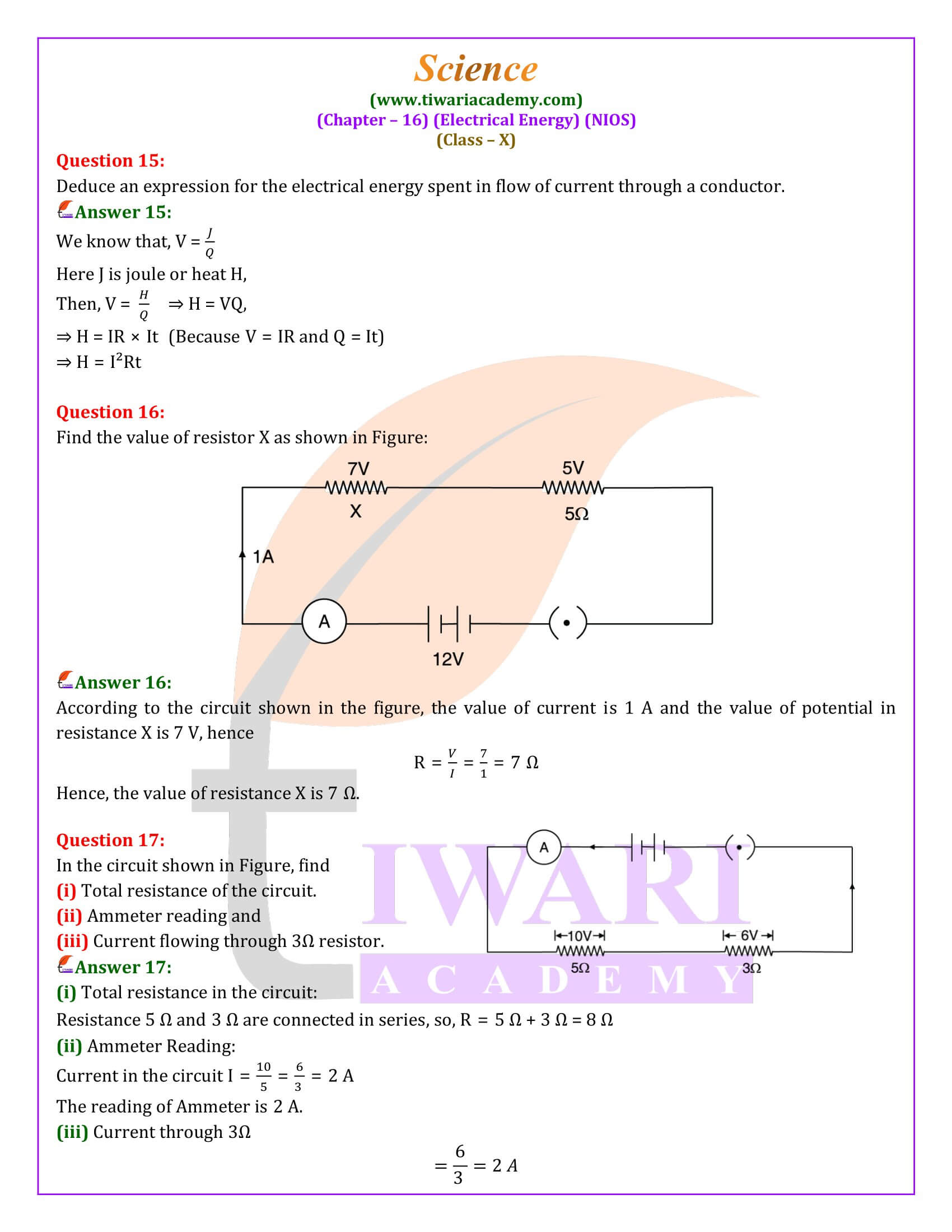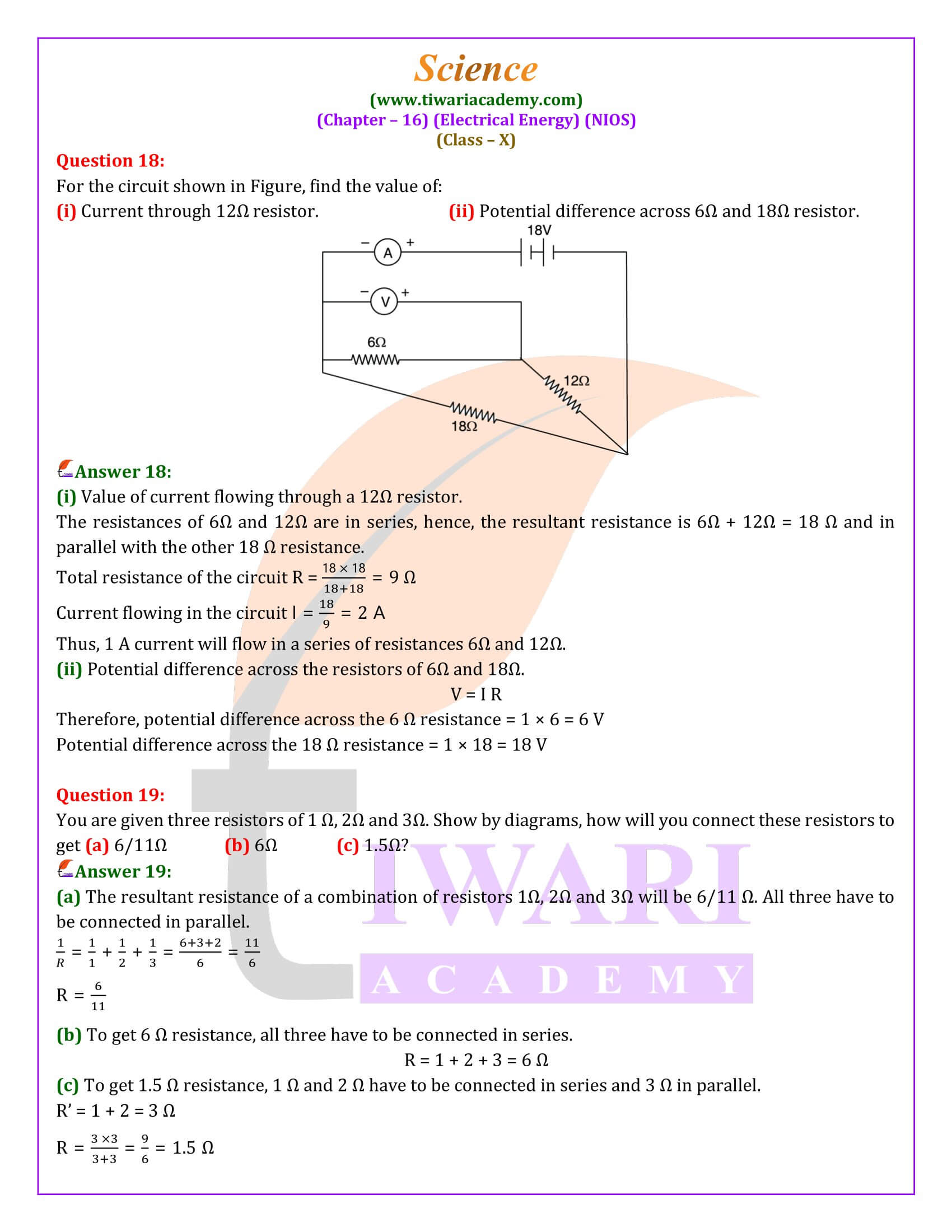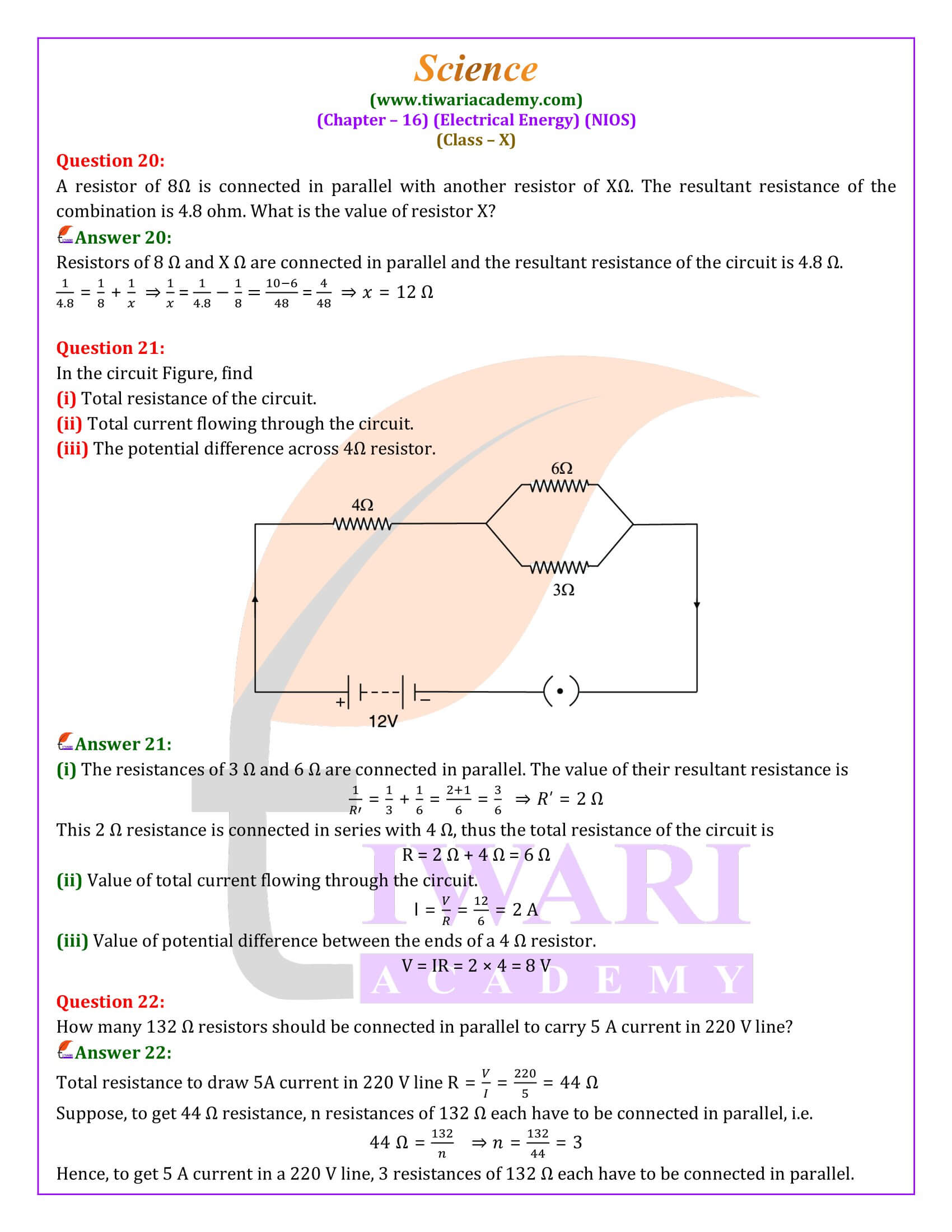NIOS Class 10 Science Chapter 16 Electrical Energy in Hindi and English Medium updated for new academic session 2025-26. All the question answers of NIOS Class 10 Science chapter 16 are given here to help the students in their exams.
Understanding Electrical Energy: Insights from Chapter 16
Electrical energy is a fundamental aspect of our daily lives, powering everything from household appliances to industrial machinery. Chapter 16 delves into the intricacies of electrical energy, starting with our experiences of static electricity during thunderstorms or when removing synthetic clothes in dry weather. This sets the stage for a comprehensive exploration of electrical energy, emphasizing its conversion from chemical or other forms into electricity that powers various devices and comforts in our lives.
The chapter 16 outlines objectives aimed at enhancing understanding of static electricity, electric charges, Coulomb’s law, electrostatic potential and potential difference, electric current, Ohm’s law, electrical resistance, and the heating effect of current. These objectives pave the way for a deeper understanding of the principles governing the behavior of electrical energy in different contexts.
Study of Electric Charges
A significant portion of the chapter 16 is dedicated to electrostatics, the study of electric charges at rest. Through experiments with plastic combs and paper, the text explains how objects become charged and interact with each other. This exploration extends to the historical context, tracing the understanding of electric charge and magnetism back to the 6th century B.C. with Thales of Miletus and later developments by Dr. William Gilbert, which laid the groundwork for the systematic study of electricity.
The chapter 16 also covers the nature of charges, illustrating the interaction between like and unlike charges through simple activities designed to demonstrate electrostatic principles in an accessible manner. It discusses the discovery of positive and negative charges and the laws governing the interaction of electrically charged objects, including Coulomb’s Law which describes the force between two point charges.
Understanding Electrical Energy
Electric current, a key concept in understanding electrical energy, is thoroughly examined. The text describes how electric current represents the flow of electric charge through a conductor, introducing the units of measurement for current (ampere) and detailing the mechanisms by which current flows, including the role of electrons and the impact of resistance on current flow.
NIOS Class 10 Science Chapter 16 proceeds to explain the combination of resistors in series and parallel, offering a practical understanding of how these configurations affect the total resistance of a circuit. This leads to discussions on the heating effect of electric current, showcasing how electrical energy can be converted into heat energy, with applications ranging from household appliances to industrial machinery.
Electrical Power and Energy
Electrical power and energy are explored, explaining how the rate of energy consumption (power) and the total energy consumed are calculated, introducing units such as watt, kilowatt, and kilowatt-hour. This section underscores the practical implications of electrical energy consumption in daily life and industry.
The chapter 16 of, NIOS Class 10 Science, emphasizes the ubiquity and importance of electrical energy in the modern world, from the functioning of simple household appliances to the operation of complex industrial systems. It lays a solid foundation for understanding the principles of electrical energy, equipping readers with the knowledge to appreciate the role of electricity in their lives and the broader world.
